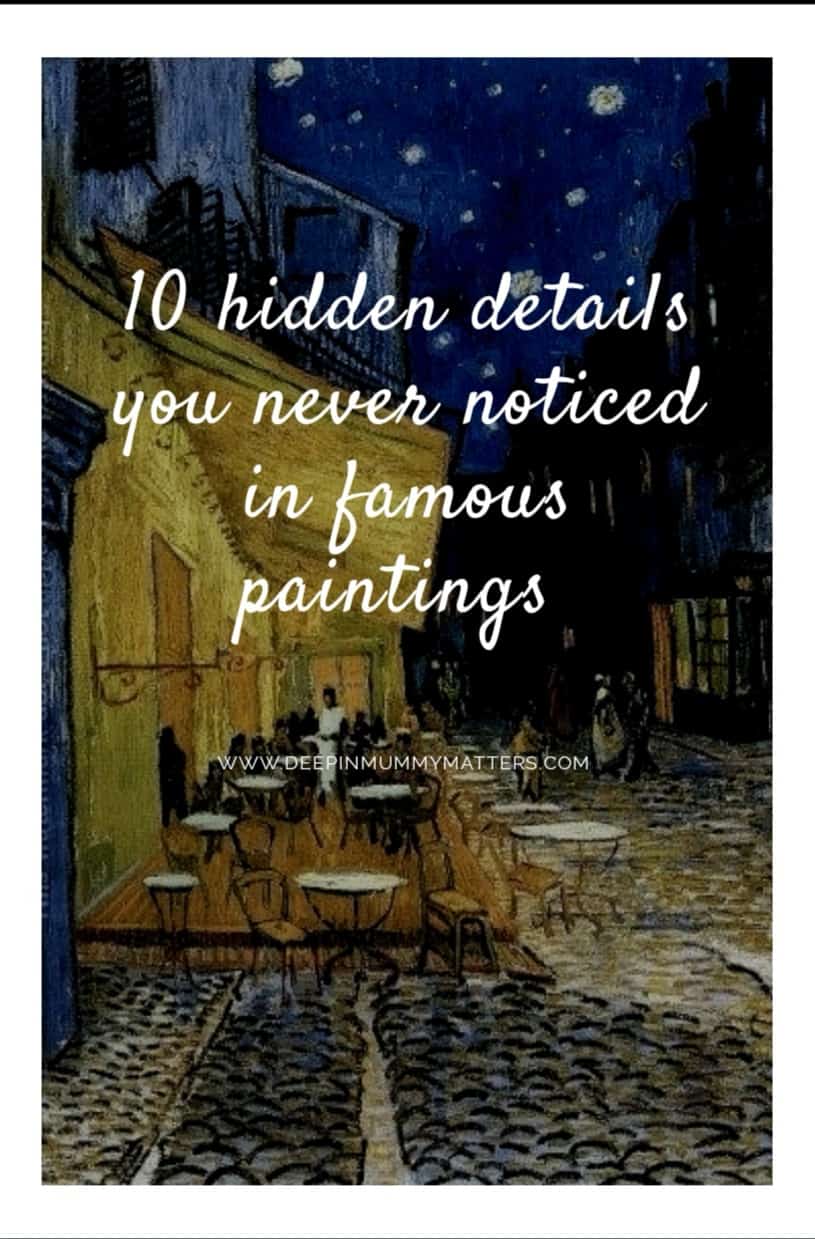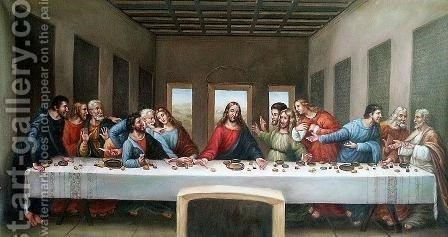Art was never birthed only for aesthetic or decorative purposes; it was preordained to be looked at, for starters. Then, it has to be understood and scoured for implied metaphors as well as inherent symbolism and meaning.
However, often, in an attempt to understand an art piece, we miss the tiniest of clues the artists have scattered all over the painting. These clues are needed to gauge the intensive depth, origin, and narrative of the painting staring back at you.
10 Hidden Details You Never Noticed in Famous Paintings
To never let that happen to you, art aficionados, we have curated a list of neglected details that are often overlooked but shroud a treasure of history underneath it. Gawk at these worldwide famous paintings in the 1st Art Gallery.
1. Café Terrace at Night by Van Gogh
The exhilarating play of light, contrast, and colour is personally lauded in this masterpiece by Van Gogh. It is the artist’s attempt to romanticize the glory, liveliness, and ethereal, picturesque elements of the night.
After close scrutiny, a lot of undiscovered elements came to light. This painting has drawn references from the Last Supper by Leonardo Da Vinci. If you look closely, there is one character, donning long Jesus-like hair in the centre of a crowd containing 12 other people. Moreover, one cross can be spotted in the background, making this piece a modernization of the iconic Da Vinci painting.
Van Gogh was a master painter and the best one in the trade, so you can definitely expect significant details shrouded in the clutter. Another such remarkable feature about this is that the star alignment is correct according to the astronomical data of the day it was painted on.
If you have a good eye, you would’ve noticed something unusual about this night landscape. It’s the fact that the night sky nowhere includes the colour black. It’s because Van Gogh believed, “The night is richer in colour than the day.”
2. The Last Supper By Leonardo Da Vinci
The Last Supper is an intricate and appealing interpretation of the most historic event, which is the supper before Jesus was betrayed by one of his disciples. Da Vinci was a symmetry buff who wanted to maintain harmony in the paint palette that hit the audience.
Despite this being a visual translation of a religious event, you won’t see any halos floating over the head of Jesus Christ. This intrigued a lot of art historians, as Da Vinci’s contemporaries were always particular about the placement of the halo. This directs us to the fact that Da Vinci always believed more in nature than God.
This detail will leave you astounded at the intricacy with which this painting has been crafted. It is the belief of many lauded musicians that this painting has merged a lot of musical notes in it. In 2007, one such musician named Giovanni Maria Pala made a 40-second long melody out of the hidden notes.
3. The School Of Athens
This incredibly detailed, gorgeous piece of art, The School of Athens, is one of the most reproduced works of all time. It brings together the world’s most lauded philosophers under the same emblazoned roof, debating amongst one another.
Deeper looks into the painting will bring your focus to how the entire building is shaped like a mariner’s cross. Speculations say that it could’ve been there to denote peace among the Greek philosophy and the Christian ideologies.
When we look at the group of people on the right, we can see a curly-haired, beardless man who is none other than Raphael, the artist himself. This figure was evidently supposed to be Apelles of Kos, a brilliant 4th century BC Greek painter who was renowned for his work.
4. Mona Lisa by Leonardo Da Vinci
Mona Lisa is indeed very looked at and is widely seen in public as a masterpiece that’s etched into the history of art. But, even with all this staring, we lose some starkly shocking details embedded in the painting.
The golden ratio, a mathematical concept that was often used in the ancient art structures as well as engineering, found its place in the painting too. Many people now use it to examine the financial markets that were used to fabricate an idyllic symmetry of beauty in the Mona Lisa. This is exactly the secret to why people are so mesmerised by it.
The folded hands sitting on the chair aren’t merely a courtesy gesture but actually trying to hide a baby bump. The crossed arms and the belly showing clearly contribute to this. Fine scans also show that the veil drawn over the Mona Lisa’s shoulders was denoted by pregnancy during the Italian Renaissance.
The Bottom Line
After years of research, art historians have finally tapped into the hidden details in the world-renowned paintings masterpieces. Browse through a series of such paintings here and be astounded by the marvellous artworks humans can create.




